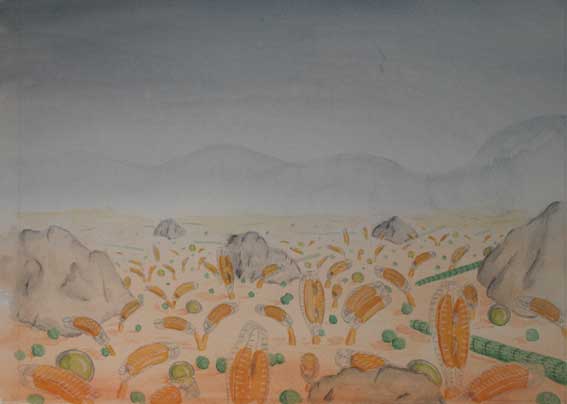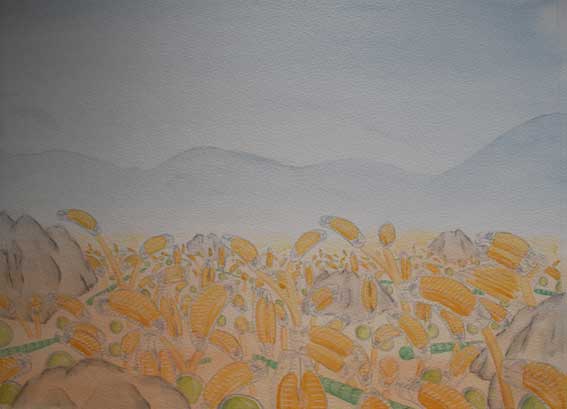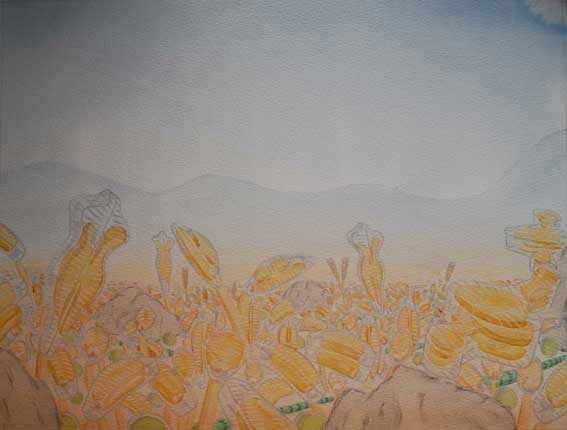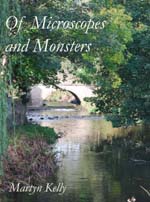Wastwater, Cumbria
 Wastwater, in the English Lake District, is as close to pristine as any lake in England, as the surrounding catchment
is mostly moorland and rough grazing, with a very low human population density.
Wastwater, in the English Lake District, is as close to pristine as any lake in England, as the surrounding catchment
is mostly moorland and rough grazing, with a very low human population density.The pictures from Wastwater form a series based on experiments done by my colleague Lydia King during her PhD studies. She studied the algae growing on stones in the littoral zone around the lake and I used her data as the starting point for a series of pictures. The aim of her study was to see how the algal communities changed over the course of a six week period, as they colonised bare surfaces.
 The first picture shows the surface of a rock after being submerged in the lake for two weeks. There are a mixture
of small green and blue-green algal cells plus a few thin filaments of the blue-green alga Phormidium along with
the diatoms Achnanthidium minutissimum and Gomphonema parvulum. At this stage, there were about 1800 cells per
square centimetre.
The first picture shows the surface of a rock after being submerged in the lake for two weeks. There are a mixture
of small green and blue-green algal cells plus a few thin filaments of the blue-green alga Phormidium along with
the diatoms Achnanthidium minutissimum and Gomphonema parvulum. At this stage, there were about 1800 cells per
square centimetre. A sample collected a week later shows the density of algal cells to have increased to about 9000 cells per
square centimetre, with competition for light becoming more intense.
A sample collected a week later shows the density of algal cells to have increased to about 9000 cells per
square centimetre, with competition for light becoming more intense. Five weeks after the start of the experiment and long-stalked diatoms such as Gomphonema acuminatum and
Cymbella affinis are able to outcompete the short-stalked Achnanthidium and G. parvulum. Chains
of Tabellaria flocculosa are also tangled amidst the upper layers of the biofilm. There are now just over
31000 cells per square centimetre.
Five weeks after the start of the experiment and long-stalked diatoms such as Gomphonema acuminatum and
Cymbella affinis are able to outcompete the short-stalked Achnanthidium and G. parvulum. Chains
of Tabellaria flocculosa are also tangled amidst the upper layers of the biofilm. There are now just over
31000 cells per square centimetre.


